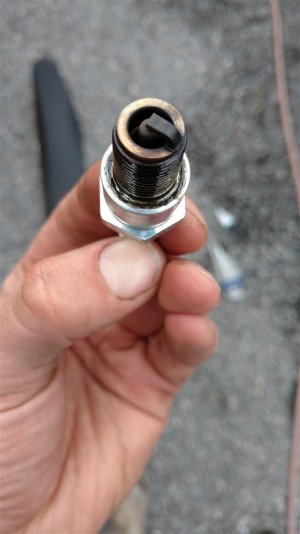Jakobi
Super Moderator
Don't just whack another insert in and guess. At minimum take note of where the piston edge sits in relation to the bottom of the exhaust port. That will give you some information about the base gasket stack. Then take a squish sample.
The way the S3 head inserts are made, they are all the same volume. It's just the deck height that changes which reduces squish and increases compression. This creates a situation where the ideal squish clearance very well could have too much compression or vice versa.
Also, don't get hung up on the plug unless if it was an old crusty one that has been burnt clean white. Throttle response will generally tell more of the story than the colour of the plug.
The way the S3 head inserts are made, they are all the same volume. It's just the deck height that changes which reduces squish and increases compression. This creates a situation where the ideal squish clearance very well could have too much compression or vice versa.
Also, don't get hung up on the plug unless if it was an old crusty one that has been burnt clean white. Throttle response will generally tell more of the story than the colour of the plug.

